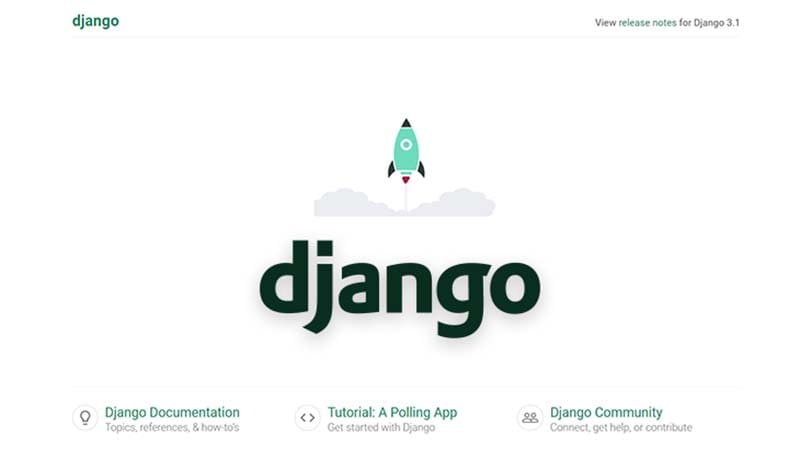How to Create Mysql Database in Django

![]()
How to use MySql with Django - For Beginners
Hello Coders,
This article explains How to use MySql with Django and switch from the default SQLite database to a production-ready DBMS (MySql). This topic might sound like a trivial subject but during my support sessions, I got this question over and over especially from beginners.
For newcomers, Django is a leading Python web framework built by experts using a bateries-included concept. Being such a mature framework, Django provides an easy way to switch from the default SQLite database to other database engines like MySql, PostgreSQL, or Oracle. MySql is a powerful open-source relational database where the information is correlated and saved in one or more tables.
Thanks for reading! - Content provided by App Generator.
Django Database System
Django provides a generic way to access multiple database backends using a generic interface. In theory, Django empowers us to switch between DB Engines without updating the SQL code. The default SQLite database usually covers all requirements for small or demo projects but for production use, a more powerful database engine like MySql or PostgreSQL is recommended.
The database settings are saved in the file referred by manage.py file. In my Django projects, this file is saved inside the core directory:
< PROJECT ROOT > | |-- manage.py # Specify the settings file | |-- core/ # Implements app logic | |-- settings.py # Django app bootstrapper | |-- wsgi.py # Start the app in production | |-- urls.py # Define URLs served by all apps/nodes
Let's visualize the contents of the settings.py file that configures the database interface.
# File: core/settings.py ... DATABASES = { 'default' : { 'ENGINE' : 'django.db.backends.sqlite3' , 'NAME' : 'db.sqlite3' , } } ...
The above snippet is provided by when Django scaffolds the project. We can see that the SQLite driver is specified by the ENGINE variable.
Update Django for MySql
To use MySql as the backend engine for a Django project, we need to follow a simple setup:
- Install the MySql Server (we can also use a remote one)
- Install the Mysql Python driver - used by Django to connect and communicate
- Create the Mysql database and the user
- Update settings Django
- Execute the Django migration and create the project tables
Install MySql Server
The installation process is different on different systems but this phase should not be a blocking point because Unix systems provide by default a MySql server and for Windows, we can use a visual installer. For more information please access the download page and select the installer that matches your operating system:
- MySql - official website
- MySql Downloads page
Install the Python Driver
To successfully access the Mysql Engine, Django needs a driver (aka a connector) to translate the Python queries to pure SQL instructions.
$ pip install mysqlclient
The above instruction will install the Python MySql driver globally in the system. Another way is to use a virtual environment that sandboxes the installation.
$ # Create and activate the virtual environment $ virtualenv env $ source env/bin/activate $ $ # install the mysql driver $ pip install mysqlclient
Create the MySql Database
During the initial setup, Django creates the project tables but cannot create the database. To have a usable project we need the database credentials used later by the Django project. The database can be created visually using a database tool (like MySQL Workbench) or using the terminal:
CREATE DATABASE mytestdb ;
Create a new MySql user
CREATE USER 'test' @ 'localhost' IDENTIFIED BY 'Secret_1234' ;
Grant all privileges to the newly created user
GRANT ALL PRIVILEGES ON `mytestdb` . * TO 'test' @ 'localhost' ; FLUSH PRIVILEGES ;
Update Django Settings
Once the MySql database is created we can move on and update the project settings to use a MySql server.
# File: core/settings.py ... DATABASES = { 'default' : { 'ENGINE' : 'django.db.backends.mysql' , # <-- UPDATED line 'NAME' : 'mytestdb' , # <-- UPDATED line 'USER' : 'test' , # <-- UPDATED line 'PASSWORD' : 'Secret_1234' , # <-- UPDATED line 'HOST' : 'localhost' , # <-- UPDATED line 'PORT' : '3306' , } } ...
Start the project
The next step in our simple tutorial is to run the Django migration that will create all necessary tables.
$ # Create tables $ python manage.py makemigrations $ python manage.py migrate
Start the Django project
$ # Start the application (development mode) $ python manage.py runserver
At this point, Django should be successfully connected to the Mysql Server and we can check the database and list the newly created tables during the database migration.

Thanks for reading! For more resources feel free to access:
- Django Dashboards - a curated index with simple starters
- Free Dashboards - open-source projects crafted in different technologies (Flask, Django, React)
How to Create Mysql Database in Django
Source: https://dev.to/sm0ke/how-to-use-mysql-with-django-for-beginners-2ni0